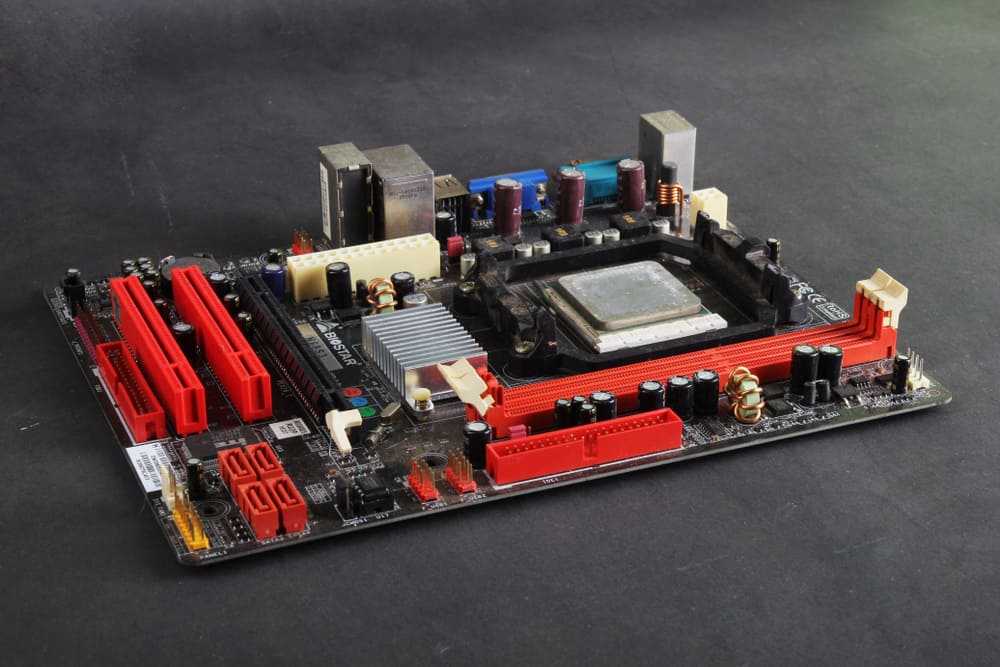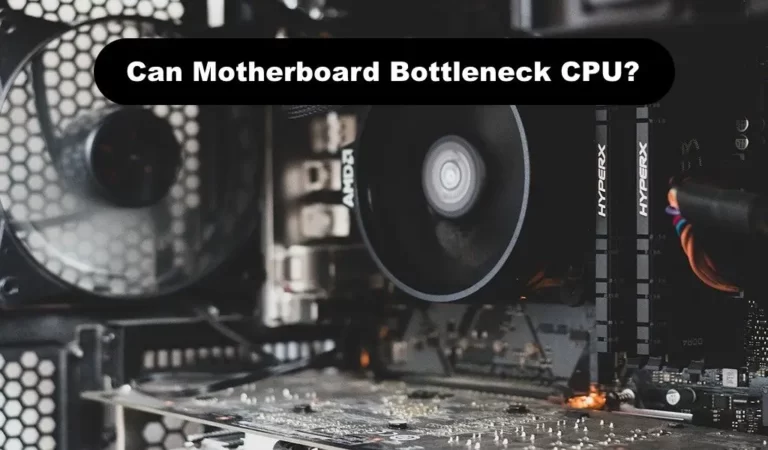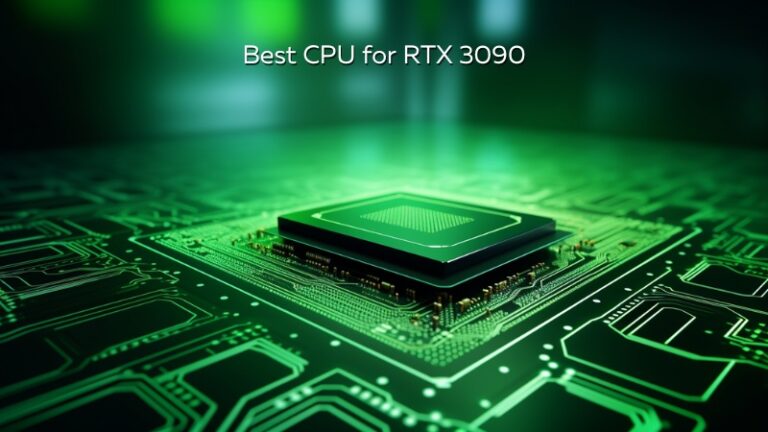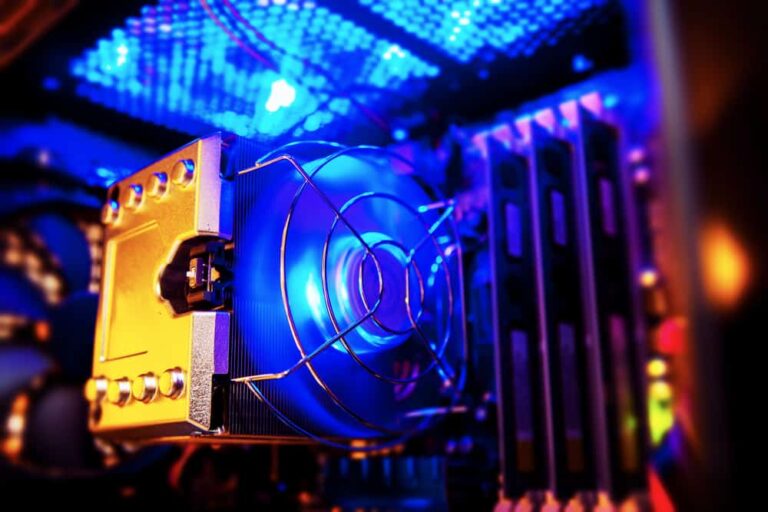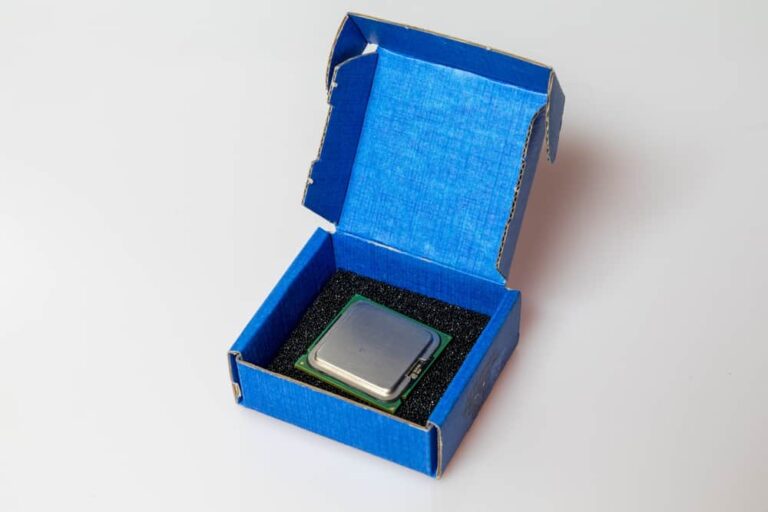How Much Does It Cost To Replace Motherboard In 2025
In 2025, the cost to replace a motherboard can range from $100 to $300. Motherboard replacement costs in 2025 can vary between $100 and $300, depending on the specific model and the complexity of the installation process.
It is important to consider the labor fees, parts costs, and any additional service charges that may be applicable.
The Role Of Motherboards In Modern Technology
Motherboards play a crucial role in modern technology, serving as the central hub for all hardware components.
In 2025, the cost of replacing a motherboard will depend on various factors such as the brand, model, and specific requirements of the device.
It is recommended to consult with a professional to determine the exact cost.
Overview Of The Motherboard’s Essential Functions
- The motherboard is the central component of a computer that connects and facilitates communication between various hardware components.
- It acts as a platform for these components to interact and function together seamlessly.
- The motherboard provides a power supply and houses critical circuits and interfaces necessary for the computer to operate efficiently.
Explanation Of How Motherboards Connect And Power Various Components
- Motherboards feature multiple slots and connectors to accommodate various hardware components such as the CPU, RAM, storage drives, and expansion cards.
- The CPU socket allows the processor to be mounted on the motherboard, while the RAM slots enable the memory modules to be installed.
- The motherboard also provides connectors for peripherals like USB, HDMI, and audio ports.
- Through the motherboard’s power connectors, it supplies power to these components, ensuring they receive the necessary electrical energy to function effectively.
Highlighting the motherboard’s Impact On Overall Performance And Compatibility
- The motherboard plays a crucial role in determining the overall performance of a computer. It affects the performance capabilities, speed, and efficiency of the connected components.
- It determines the compatibility of various components by supporting specific processors, memory types, interface standards, and expansion slots.
- Choosing the right motherboard is essential to ensure compatibility with other hardware components and maximize performance potential.
The motherboard is a vital component that connects and powers various hardware elements within a computer system.
Its essential functions include providing a platform for interaction, facilitating power supply, and determining overall performance and compatibility.
The right motherboard choice is crucial for optimal performance and seamless hardware integration.
Factors Affecting Motherboard Replacement Cost
Motherboard replacement costs can be influenced by several factors.
These include the brand and model of the motherboard, the complexity of the installation process, any additional components required, and the labor charges of the technician.
Considering these factors will help estimate the cost of replacing a motherboard accurately.
Motherboards are an essential component of any computer system, serving as a crucial hub that connects all the hardware elements.
However, like any electronic device, motherboards can experience faults or wear out over time.
When this occurs, the cost of replacing the motherboard becomes a pressing concern for users.
Various factors can influence the overall price, ranging from technological advancements to market demand and warranties.
In this section, we will delve into these factors to give you a clear understanding of the costs involved in replacing a motherboard in 2025.
Examining The Impact Of Technological Advancements On Motherboard Pricing:
- Chipset compatibility: As technology advances at a rapid pace, newer motherboards are often equipped with the latest chipset models. However, this compatibility comes at a cost, as more advanced chipsets tend to be priced higher than their older counterparts.
- Enhanced features: Technological advancements bring with them a multitude of enhanced features, such as faster data transfer speeds, increased memory capacity, and improved overclocking capabilities. These additional features contribute to the overall cost of the motherboard, reflecting the level of sophistication offered.
- Integration of new connectors and ports: With each passing year, manufacturers introduce newer and faster connectors and ports to accommodate the evolving needs of users. The inclusion of these advanced connectors, such as USB 3.1 or Thunderbolt, can drive up the cost of motherboards.
Discussing The Influence Of Market Demand And Availability On Prices:
- Supply and demand dynamics: When there is a high demand for a particular motherboard model and limited availability, prices tend to increase. Conversely, if there is lower demand or an oversupply of certain models, prices may decrease. The overall fluctuation in market demand and supply can directly impact the cost of motherboard replacements.
- Brand reputation: Established brands in the market often carry a higher price tag compared to lesser-known alternatives. This is due to the trust and reliability associated with these brands, which influences consumer purchasing decisions. Hence, a motherboard replacement from a reputable brand is likely to be more expensive than that from an unfamiliar brand.
Highlighting The Role Of Warranties And Manufacturer Pricing Strategies:
- Warranty coverage: Most motherboards come with a warranty, which can significantly impact the replacement cost. Expensive motherboards often come with longer warranty periods, providing users with peace of mind in case of malfunction or failure. However, bear in mind that warranties may not cover all types of damages, so it is crucial to review the terms and conditions associated with the warranty.
- Manufacturer pricing strategies: Manufacturers have the autonomy to set the pricing for their motherboard models. Factors such as production costs, research and development investments, marketing efforts, and brand positioning influence the pricing strategies. Therefore, different manufacturers may have varying price ranges for their motherboard replacements.
Ultimately, the cost of replacing a motherboard is influenced by a combination of technological advancements, market demand and availability, as well as warranties and manufacturer pricing strategies.
By considering these factors, you can make informed decisions when it comes to selecting an appropriate replacement motherboard that meets your needs and budget.
Average Cost Of Replacing A Motherboard
The average cost of replacing a motherboard in 2025 will depend on various factors such as brand, model, and additional repairs required.
However, anticipate costs ranging from $200 to $600 for motherboard replacement services.
Exploring The Average Cost Range For Motherboard Replacements:
In 2025, the average cost of replacing a motherboard can vary depending on several factors.
Here’s an overview of the average cost range for motherboard replacements:
- Budget-friendly options: ($100 – $200)
- Some entry-level or budget-friendly motherboards fall within this price range. These options may not have all the advanced features but can still meet the basic requirements.
- These motherboards are suitable for users with limited needs and tight budgets.
- Mid-range options: ($200 – $400)
- Most motherboards fall within this price range and offer a good balance between cost and performance.
- Mid-range motherboards are equipped with better quality components, improved power delivery systems, and a wider range of features.
- They are suitable for gamers, content creators, and general users who require more functionality and performance.
- High-end options: ($400 – $800+)
- High-end motherboards cater to enthusiasts, professionals, and gamers who demand top-notch performance and advanced features.
- These motherboards often come with premium build quality, robust power phases, extensive connectivity options, and support for overclocking.
- The higher cost is justified by the superior quality and capabilities they offer.
Discussing Price Variations Among Different Brands And Models:
When it comes to motherboard replacements, the cost can also vary based on the brand and specific model. Here are some key points to keep in mind:
- Brand reputation: Established brands such as ASUS, Gigabyte, MSI, and ASRock are known for producing reliable and high-quality motherboards. Consequently, their products tend to be priced on the higher side.
- Brand loyalty: Some individuals prefer sticking to a particular brand due to familiarity or trust. This can influence the price they are willing to pay for a replacement motherboard.
- Features and specifications: Motherboards with more advanced features, better overclocking potential, and superior build quality generally command higher prices.
- Availability and demand: Limited stock or high demand for a particular brand or model can drive up the prices in the market.
- Warranty and support: Brands known for their excellent customer service and warranty coverage may have slightly higher prices, but they provide peace of mind in terms of after-sales support.
Highlighting The Impact Of Additional Services, Such As Installation And Labor:
It’s important to consider the additional services required when replacing a motherboard, as these can significantly impact the overall cost:
- Professional installation: If you’re not confident in your technical skills, hiring a professional to install the motherboard is a wise choice. The cost of installation can vary depending on the complexity of the setup and the technician’s fees.
- Labor charges: In some cases, the replacement may require additional labor, especially if other components need to be removed or reinstalled. Labor charges are typically billed separately and can vary based on the repair shop or technician you choose.
- Compatibility checks: When replacing a motherboard, it’s crucial to ensure compatibility with existing components such as the CPU, RAM, and storage devices. Some technicians offer compatibility checks as part of their services, which may incur additional charges.
- Data migration: If you want to transfer data from the old motherboard to the new one, data migration services may be required. These services can include transferring the operating system, software, and files. Data migration charges vary depending on the complexity and amount of data to be transferred.
- Warranty coverage: It’s worth checking if the replacement motherboard comes with its own warranty. This can provide protection against potential defects and save you from additional repair costs down the line.
Considering these factors and the average cost range for motherboard replacements, it’s essential to assess your specific needs, budget, and the extent of additional services required.
By doing so, you can make an informed decision and ensure a smooth and successful motherboard replacement.
Factors To Consider When Replacing A Motherboard
Factors to consider when replacing a motherboard include compatibility with other components, the form factor of the motherboard, the need for any additional features, and the overall cost of the replacement.
It is important to research and compare prices to get an idea of how much it will cost to replace a motherboard.
Discussing The Compatibility Of Motherboards With Existing Components:
- Compatibility is a crucial factor to consider when replacing a motherboard. Ensuring that the new motherboard is compatible with your existing components will save you the hassle of purchasing additional hardware. Here are some points to consider:
- Processor compatibility: Check whether the new motherboard supports the socket type of your existing processor. If not, you may need to invest in a new processor.
- RAM compatibility: Verify that the new motherboard is compatible with the type and speed of your existing RAM modules. Mismatched RAM could lead to performance issues.
- Graphics card compatibility: If you’re using a separate graphics card, ensure that the new motherboard has the appropriate slots and connections to accommodate it.
- Expansion slot compatibility: Check if the new motherboard has the necessary expansion slots for any additional cards, such as sound cards or network adapters, that you may have.
- Storage compatibility: Confirm that the new motherboard supports the type of storage devices you have, such as SATA or M.2 connectors.
Highlighting The Importance Of Choosing The Right Form Factor For Proper Fit:
- The form factor refers to the physical dimensions and layout of a motherboard. It is crucial to select the correct form factor when replacing a motherboard to ensure it fits properly within your computer case. Here are some key considerations:
- ATX, Micro-ATX, and Mini-ITX are common form factors. Determine the form factor of your current motherboard and choose a replacement of the same form factor to avoid compatibility issues.
- Depending on your requirements, you may also consider switching to a different form factor to accommodate more compact cases or additional components. However, keep in mind that this may require additional modifications or upgrades.
- Check the mounting hole positions on the new motherboard to ensure they align with the standoffs in your computer case. Proper alignment will prevent any unnecessary stress on the motherboard or its components.
Exploring The Benefits Of Upgrading To A Newer Model Versus A Direct Replacement:
- When replacing a motherboard, you have the option of either directly replacing it with a similar model or upgrading to a newer and more advanced version. Consider the following advantages of upgrading:
- Enhanced performance: Upgrading to a newer motherboard can provide improved performance capabilities, such as faster data transfer rates, better power management, and support for the latest hardware technologies.
- Future-proofing: Opting for an upgraded motherboard ensures compatibility with upcoming technologies and components. This can extend the lifespan of your computer system and save you from frequent upgrades.
- Additional features: Upgraded motherboards often come with additional features like built-in Wi-Fi, Bluetooth, or improved audio capabilities. These features can enhance your overall computing experience.
- Expansion options: Newer motherboards may offer more expansion slots or support for additional RAM, allowing you to expand your system’s capabilities in the future.
- Energy efficiency: Upgraded motherboards usually come with improved power management, leading to energy savings and reduced operating costs.
Considering these factors will help you make an informed decision when replacing your motherboard, ensuring compatibility with existing components, proper fit within your computer case, and potentially benefiting from the advantages of upgrading to a newer model.
Diy vs. Professional Motherboard Replacement
Replacing a motherboard in 2025 can be done DIY but can be complex.
A professional motherboard replacement is recommended due to the intricacies involved and costs that vary depending on the specific model and technician.
Discussing The Advantages And Disadvantages Of DIY Replacement
Performing a motherboard replacement yourself may seem like a cost-effective solution, but it does come with certain advantages and disadvantages.
Let’s explore both sides:
Advantages of DIY replacement:
- Cost-saving: Undertaking the task yourself allows you to avoid the labor fees charged by professional technicians.
- Flexibility: You have control over the process, ensuring that it aligns with your schedule and preferences.
- Learning opportunity: DIY replacement provides a chance to gain knowledge and develop skills in computer hardware.
Disadvantages of DIY replacement:
- Lack of expertise: Inexperienced individuals may face challenges and complications during the replacement process.
- Risk of damage: Mishandling components or improper installation can damage the motherboard or other parts.
- Voiding warranties: Many manufacturers require professional assistance for warranty claims, so DIY replacement may void those warranties.
Highlighting The Risks Involved In Inexperienced Motherboard Replacement
While taking on a DIY motherboard replacement may seem appealing, it can be risky for individuals lacking experience in computer hardware.
Consider the following risks:
- Damage to components: Inexperienced hands can mishandle delicate components, leading to irreparable damage.
- Compatibility issues: Without proper knowledge, it’s easy to overlook compatibility requirements, resulting in incompatible parts or incorrect installation.
- Incorrect installation: One wrong connection or improperly installed component can render the motherboard useless or cause malfunctioning.
Comparing The Cost-Effectiveness And Efficiency Of Professional Services.
Choosing professional services for motherboard replacement offers its own set of advantages and efficiencies:
Cost-effectiveness of professional services:
- Expertise and experience: Professionals possess the necessary skills and knowledge to ensure a smooth and successful replacement, saving you time and costly mistakes.
- Warranties and guarantees: Reputable professionals offer warranties on their work, providing peace of mind for any potential issues in the future.
- Lower risk of damage: Trained technicians have the expertise to handle delicate components and perform the replacement with precision, minimizing the risk of damage.
Efficiency of professional services:
- Timely completion: With their experience and resources, professionals can complete a motherboard replacement more efficiently than an inexperienced individual.
- Access to tools and equipment: Professionals have specialized tools and equipment that ensure a proper and efficient replacement, resulting in optimal performance.
While DIY motherboard replacement may appear cost-effective, it comes with risks and potential complications for inexperienced individuals.
Opting for professional services offers expertise, efficiency, and decreased risk of damage while ensuring a successful replacement.

Credit: homeguide.com
Tips For Reducing Motherboard Replacement Cost
Reduce your motherboard replacement cost with these helpful tips.
Find budget-friendly options, compare prices, consider refurbished boards, and consult with experts to save money on replacing your motherboard.
Exploring Alternative Options, Such As Refurbished Or Used Motherboards:
- Consider purchasing a refurbished or used motherboard as an alternative to buying a brand-new one. This can significantly reduce the cost of motherboard replacement.
- Refurbished motherboards are those that have been thoroughly tested, repaired, and restored to their original working condition. They offer a reliable option at a lower price point.
- Used motherboards, on the other hand, are pre-owned but can still be in good working condition. It’s important to purchase from reputable sellers and ensure the motherboard has been tested before making a decision.
Highlighting The Benefits Of Price Comparison And Shopping Around:
- Take the time to compare prices from different retailers before making a purchase. Prices can vary significantly, so it’s worth exploring different options to find the most cost-effective deal.
- Look for online retailers, local computer stores, and even online auction websites where you can potentially find great deals.
- By shopping around, you can save money and find the best value for your budget.
Discussing The Importance Of Regular Maintenance And Preventive Measures:
- Regularly maintaining your motherboard can help prevent the need for replacement and ultimately lower costs.
- Keep your computer clean by regularly removing dust and debris from the motherboard and other components.
- Be cautious when performing hardware upgrades or installations to avoid damaging the motherboard.
- Using surge protectors or uninterruptible power supplies (UPS) can also help protect your motherboard from electrical damage.
- Regularly updating the motherboard’s firmware and drivers can improve its performance and extend its lifespan.
Remember, exploring alternative options, comparing prices, and practicing regular maintenance can all contribute to reducing the cost of motherboard replacement.
By being proactive, you can save money and ensure the longevity of your computer system.
Impact Of Technological Trends On Future Motherboard Costs
Technological trends will have a significant impact on future motherboard costs, especially when considering the estimated cost to replace a motherboard.
With advancements in technology, the cost of motherboards may increase due to higher demands for more advanced features and improved performance.
These trends could potentially affect the overall cost of motherboard replacements in the near future.
With the ever-evolving world of technology, advancements in various fields are shaping the future of motherboard development.
In this section, we’ll explore the potential impact of advancements like miniaturization and integrated components on the cost of motherboard replacements.
- Miniaturization:
- Smaller form factor motherboards are likely to become more prevalent as manufacturers find innovative ways to optimize space.
- Miniaturization allows for greater portability and space-saving benefits in devices like laptops and mobile devices.
- However, the smaller form factor may result in increased complexity and higher manufacturing costs.
- Integrated Components:
- Motherboards of the future might witness a growing integration of components, such as graphics cards, Network Interface Controllers (NICs), and even Artificial Intelligence (AI) processors.
- This integration aims to streamline the overall design and enhance the performance of motherboards.
- While this may lead to cost savings for consumers by reducing the need for additional hardware, it could also result in an increase in the initial motherboard cost.
Exploring The Influence Of Emerging Technologies On Motherboard Development
The rapidly advancing fields of Artificial Intelligence (AI) and the Internet of Things (IoT) are anticipated to have a profound impact on future motherboard development.
Let’s take a closer look at how these technologies might influence the cost of motherboard replacements.
- AI Integration:
- The integration of AI technologies in motherboards can enable improved system performance, enhanced power efficiency, and advanced capabilities.
- AI-enabled features like deep learning algorithms and real-time data analysis might become standard in motherboards.
- However, these advancements may result in a higher initial cost for AI-integrated motherboards.
- IoT Compatibility:
- As the IoT ecosystem continues to expand, motherboards will need to accommodate the increasing number of connected devices.
- IoT compatibility may require additional hardware components and specialized firmware, potentially leading to higher motherboard replacement costs.
- On the other hand, IoT integration can enhance the functionality and convenience of motherboards, providing users with seamless connectivity and smart automation capabilities.
Long-Term Implications Of Technological Trends On Pricing And Compatibility
The ongoing advancements in motherboard technology are not just limited.
It’s essential to consider the long-term implications of these trends on pricing and compatibility.
- Pricing Considerations:
- The incorporation of cutting-edge technologies and enhanced features might contribute to higher motherboard prices initially.
- However, as manufacturing processes improve and economies of scale come into play, the prices are likely to stabilize or even decrease over time.
- Competition among manufacturers will also play a vital role in determining future motherboard costs.
- Compatibility Challenges:
- With the continuous evolution of technology, there is a risk of compatibility issues arising between older hardware and the latest motherboards.
- Motherboard manufacturers will need to ensure backward compatibility or provide suitable upgrade paths to prevent users from having to replace multiple components.
- Compatibility challenges could impact the costs associated with motherboard replacements if users are required to upgrade additional components alongside the motherboard.
As we look toward the future, it’s fascinating to see how technological trends and advancements will shape the landscape of motherboard development.
These advancements, ranging from miniaturization to AI integration and IoT compatibility, have significant implications for both the cost and functionality of motherboard replacements in the years to come.
FAQs on Motherboard Replacement Cost
What Is The Cost Of Replacing A Motherboard?
The cost of replacing a motherboard varies depending on the model and brand. Contact a technician for accurate pricing.
Is It Worth Replacing A Broken Motherboard?
Yes, it is worth replacing a broken motherboard as it is essential for the functioning of your computer.
How Many Years Does A Motherboard Last?
A motherboard typically lasts for around 4 to 6 years, depending on usage and quality.
Is It Better To Replace Or Repair A Motherboard?
It is generally better to replace a motherboard rather than try to repair it.
Conclusion
Replacing the motherboard of your computer can be a costly endeavor, but it is an essential investment in ensuring the optimal performance of your device in 2025 and beyond.
The exact cost will depend on several factors, such as the brand and model of your computer, the complexity involved in the replacement, and where you purchase the new motherboard.
However, by considering the long-term benefits and potential improvement in speed and functionality, the expense is often justified.
It is recommended to consult with a professional technician or a reputable computer repair service to assess your specific situation and provide an accurate cost estimate.
While the expense may seem daunting, remember that a properly functioning motherboard is crucial for the overall health and longevity of your computer.
By investing in a replacement, you can ensure that your device remains up-to-date and capable of handling the technological advancements of the future.

